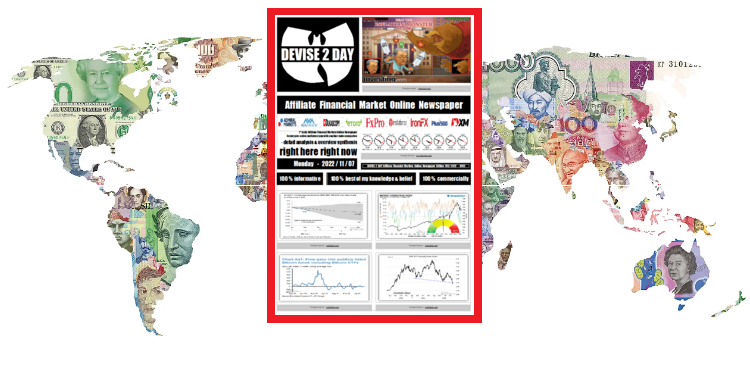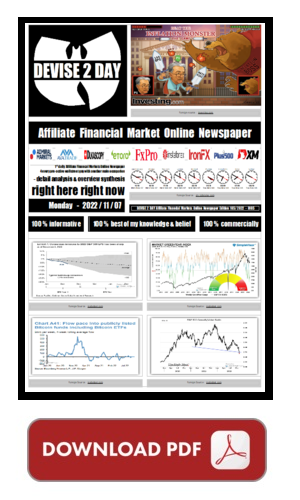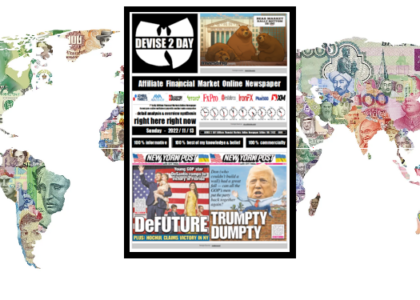
2022/11/07 (105) Technical Analysis – XETR-BAYN & UKOIL
99.52 USD In UKOIL In Todays Trading Session
– Only 48 Cents Were Missing To Get Stopped Out!
Oil prices give way at the start of the new trading week. The background is the fear of new lockdown measures in China – and a reduced demand forecast by Opec. Many colleagues address this issue. And I don’t want to belittle the Chinese demand for black gold either. let alone ignore it. That’s why I always work with stop prices – like 100 USD in this case. Because if the demand from China comes back – and it will come – then it’s possible that the oil price will rise above 100 USD again! And then? I don’t think there is as much upside potential for bulls as there was at the beginning of 2022, for example, as Russia launched a military attack on Ukraine. And that, at least in my opinion, is the crucial point! Since I’m not assuming a break-out of up to USD 120 and even more, like back then just before the start of the war – on the contrary! If you follow my 4XSetUps scenarios carefully on a regular basis, then you too will realize that the Ukraine is working militarily on its counter-offensive – and possibly even faster than we can imagine, it will be able to control its entire national territory again, from Kiev, in a self-determined manner. And that is what this short 4XSetUp Trading Capability aims for in the long term. So don’t lose your nerve – and pull the ripcord at the latest at 100 USD in the UKOIL. And then also in 2023, if it has to be…
The Price Of Brent Crude Remained Below The 200-Day Moving Average
The price of Brent crude ended the week at $98.75 after closing the previous week at $95.77. The price of WTI ended the week at $92.61 after closing the previous week $87.90. Even with the upward price movement, the price of Brent crude did not break through the upper resistance level of $98.00.
There remain uncertainties pertaining to oil supply, including the pending price cap on Russia oil-related exports. The cap is planned to take effect on December 5 with respect to seaborne oil shipments and on February 5 with respect to oil products. It has been reported that the G7 allies have agreed to setting a fixed price on Russia oil exports in the range of the mid-$60s. The plan also includes the ban on western oil transport services (insurance, finance and brokering) for oil cargoes priced above the fixed price. Regardless, we are still holding to our view that price cap and other sanctions will have limited impact on Russian oil exports and that Russia’s oil production will average only around 400,000 b/d less in 2023 than in 2022.
Additionally, we are expecting that growth in oil demand will remain relatively tepid. On average, we are forecasting that global demand will increase by 2.20million b/d in 2022. For 4Q we are forecasting that demand will increase by 1.10 million b/d in comparison to 3Q. We are also forecasting that global diesel demand will increase by 0.25 million b/d in 4Q22 with the following regional breakdown:
Africa demand will increase by 0.06 in comparison with 3Q22
Asia demand will increase by 0.16 million b/d in comparison with 3Q22
Russia and CIS demand will increase by 0.02 million b/d in comparison with 3Q22
Europe demand will increase by 0.09 million b/d in comparison with 3Q22
Latin America demand will decrease by 0.05 million b/d in comparison with 3Q22
Middle East demand will decrease by 0.05 million b/d in comparison with 3Q22
North America demand will increase by 0.04 million b/d in comparison with 3Q22
The main reason for the disappointing demand outlook is the expectation that the global economy, including the US economy and Chinese economies will be facing challenges. While there is some uncertainty about the next rate increase being 50 basis points or 75 basis points, it seems that the Federal Reserve will continue raising interest rates. The latest jobs report issued by the US Labor Department indicated that the US added 261,000 jobs in October (on basis of the Establishment Survey). However, unemployment rate increased to 3.7%. Also, the broader U-6 unemployment rate (measures the percentage of the U.S. labor force that is unemployed, plus those who are underemployed, marginally attached to the workforce, and have given up looking for work) moved to 6.7%. Additionally, the employment-to-population ratio for prime-age workers decreased by the most since 2Q of 2020 and the percentage of people between the age of 25 to 54 employed or looking for work decreased to 82.5% from 82.8% in August. Furthermore, the percentage of unemployed people finding jobs decreased to 26.7% in October from 32.3% in August. Meanwhile, hourly earnings increased by only 4.86%, which is well below the overall inflation rate of 8.2%.
There is also a widening gap between the establishment survey and the household survey. The establishment survey is viewed as the more accurate because it represents 131,000 businesses and government agencies which consists of 670,000 worksites, while the household survey only includes 60,000 households. However, the gap between the two surveys is becoming noteworthy with the household survey indicating that job growth has stagnated and the number of jobs plateaued months ago while the establishment survey continues to show job increases. Since March the difference between the establishment survey and the household survey equates to a difference of 2.3 million jobs. One hypothesis for the difference is that the establishment survey is being inaccurately modified by seasonal adjustments. Another hypothesis is that more people are required to work second jobs because disposable income has dropped below pre-covid levels with personal savings rate falling to only 3.1% while credit card debt is significantly higher than in 2020.
Outside of the US, there were rumors last week that China would be moving to a new approach to COVID-19 with reduced restrictions. However, there have beenno announcement of any official policy change and COVID-related restrictions remain in place for travel and testing requirements. We are still holding to our position that China will keep COVID-related restrictions in place through at least March of next year.
Brent Crude Hovers Around $99
Brent crude futures were trading around $99 per barrel on Monday, hovering at levels not seen since late August, as investors weighted tight supplies against a gloomy outlook for demand. On top of that, a weaker dollar and general risk appetite also lent optimism to bulls. On the supply side, OPEC+ has recently agreed to cut production by 2 million barrels per day in November, the most since the pandemic, while speculation grows that the oil cartel will further intervene in markets to shore up prices. However, fears of a potential recession-driven demand downturn continued to hang over the market. Chinese authorities reiterated their commitment to the zero-Covid approach over the weekend, dashing hopes for a policy pivot that could revive demand in the world’s top crude importer.
good morning, good day, and/or good night
at whatever time, wherever you are !
right here right now :


















